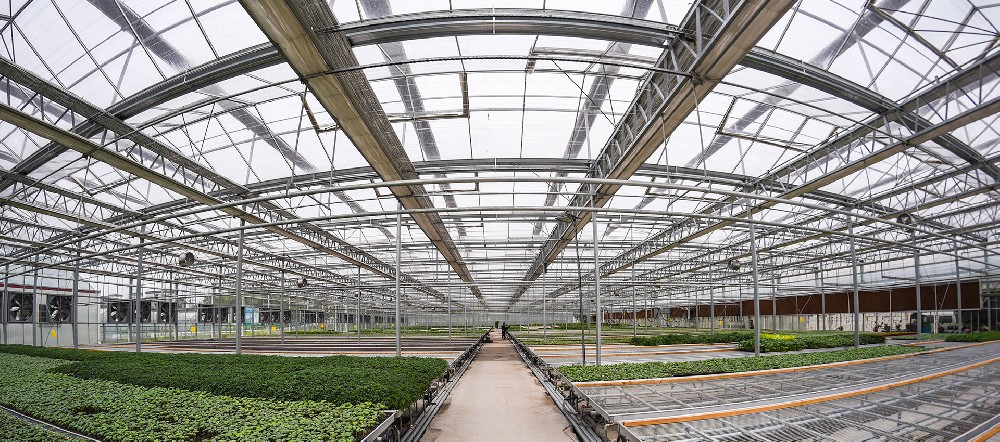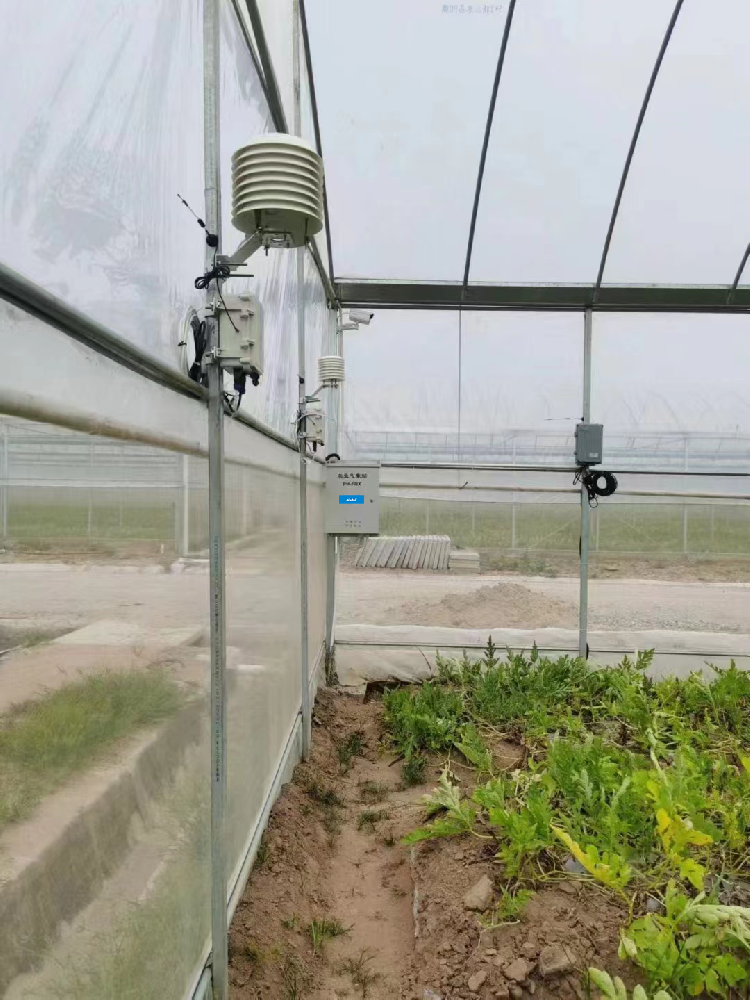

— Blogs —
—Products—
 Consumer hotline +8618073152920
Consumer hotline +8618073152920 WhatsApp:+8615367865107
Address:Room 102, District D, Houhu Industrial Park, Yuelu District, Changsha City, Hunan Province, China
Product knowledge
Time:2023-12-21 15:34:14 Popularity:5739
The main purpose of using sensors in greenhouses is to accurately monitor and control the environmental conditions in the greenhouse, thereby improving the quality of crop growth and yield. Specifically, the following are a few important reasons for using sensors in greenhouses:
1. Provision of real-time data: Environmental conditions in greenhouses need to be monitored and regulated in a timely manner to meet the needs of crops at different stages of growth. Sensors can provide real-time, accurate data to help farmers better understand the environmental conditions inside the greenhouse and make timely adjustments accordingly.

2. Precise control of the environment: The environmental conditions inside the greenhouse are critical to plant growth. Through the use of sensors, farmers can accurately control the temperature, humidity, light intensity, carbon dioxide concentration and other parameters inside the greenhouse, in order to provide the most suitable growing environment.
3. Reduced manual management: Sensors can automatically monitor and regulate environmental parameters in the greenhouse, reducing the workload and cost of manual management. This not only improves production efficiency, but also reduces the impact of human factors on crop growth and improves production quality.
4. Prevention of pests and diseases: Incorrect environmental conditions in the greenhouse can lead to the occurrence of pests and diseases. Sensors can provide real-time data to help farmers find problems in time and take effective measures to prevent the occurrence of pests and diseases, thereby reducing losses.
Greenhouses typically use a variety of sensors to monitor and control environmental conditions, common sensors include:
1. temperature sensors: used to monitor temperature changes within the greenhouse to help regulate heating or ventilation systems to ensure the right temperature for crop growth.
Temperature sensors provide real-time temperature data to help farmers understand the temperature inside the greenhouse. This is important for regulating the greenhouse heating or ventilation system to ensure that the crop grows within the right temperature range. By accurately controlling temperature, temperature sensors can help improve crop yield and quality.
2. humidity sensors: measure the level of humidity in the air to help control irrigation systems and ventilation equipment to maintain proper humidity levels.
Humidity sensors provide real-time data on humidity levels, enabling farmers to adjust irrigation systems and ventilation equipment to maintain proper humidity levels. Maintaining the right level of humidity helps plants to fully absorb water, promotes healthy growth, and helps prevent the occurrence of pests and diseases. Therefore, humidity sensors are critical to the management of the greenhouse environment and crop growth.
3. Light Sensor: Used to monitor light intensity and help adjust shade cloths or supplemental lighting equipment to ensure that the crop receives the proper amount of light.
Light sensors can provide real-time light data to help farmers adjust shading or supplemental lighting equipment to ensure that the crop receives the proper amount of light. Light is an important factor in plant photosynthesis and plays a key role in plant growth and development. By using light sensors, farmers can maximize the use of natural light and make appropriate supplemental light as needed to optimize crop growth conditions.
4. CO2 Sensor: Measures the CO2 concentration in the greenhouse to help optimize ventilation and CO2 supplementation to promote plant photosynthesis.
CO2 sensors provide real-time data on CO2 levels to help farmers optimize ventilation and CO2 supplementation to promote plant photosynthesis and growth. Proper CO2 concentration can improve the photosynthetic efficiency of plants, increase nutrient uptake, and promote crop growth.CO2 sensors can help farmers better manage the greenhouse environment and improve crop yield and quality.
5. Soil Moisture Sensor: Installed in the soil to monitor soil moisture for precise control of the irrigation system to avoid over-wetting or over-drying.
Soil moisture sensors provide accurate data on soil moisture, enabling farmers to precisely control irrigation systems to avoid over-wetting or over-drying. By adjusting the amount of irrigation in a timely manner, farmers can keep soil moisture in the right range, provide plants with the water they need, and avoid waste and root diseases.
The product value function of these sensors is to provide real-time, accurate data to help farmers accurately monitor and regulate greenhouse environmental conditions to optimize the growing environment and improve productivity and crop quality.
1. Choose the right sensor: different types of greenhouse sensors have different functions and scope of application. When selecting a sensor, choose the right one according to your needs and the greenhouse environment. Make sure the sensor can provide the required data and is compatible with other equipment or systems.
2. Installation location and method: The installation location of the sensor is critical to the accuracy of data collection. When installing the sensor, choose a suitable location to avoid being affected by direct sunlight, wind gusts or other disturbing factors. At the same time, make sure there is enough distance between the sensor and plants or other objects to avoid misreading or interference.
3. CALIBRATION AND MAINTENANCE: The accuracy of the sensor requires periodic calibration and maintenance. Perform regular calibration and inspection as required by the sensor to ensure it is functioning properly and providing accurate data.

4. Data Interpretation and Decision Making: Accurate sensor data is only the foundation, decision making and action is the most critical. After obtaining the sensor data, we should be able to correctly interpret and analyze the data, and make corresponding decisions and adjustments based on the data. This requires a certain amount of specialized knowledge and experience, or you can rely on professional greenhouse management software or expert guidance.
In conclusion, using greenhouse sensors requires choosing the right sensor, installing and maintaining it correctly, interpreting the data accurately and making decisions accordingly, as well as paying attention to data security and privacy protection. This will maximize the role of the sensor and improve the efficiency and yield of greenhouse management.
Related recommendations
Sensors & Weather Stations Catalog
Agriculture Sensors and Weather Stations Catalog-NiuBoL.pdf
Weather Stations Catalog-NiuBoL.pdf
Related products
 Combined air temperature and relative humidity sensor
Combined air temperature and relative humidity sensor Soil Moisture Temperature sensor for irrigation
Soil Moisture Temperature sensor for irrigation Soil pH sensor RS485 soil Testing instrument soil ph meter for agriculture
Soil pH sensor RS485 soil Testing instrument soil ph meter for agriculture Wind Speed sensor Output Modbus/RS485/Analog/0-5V/4-20mA
Wind Speed sensor Output Modbus/RS485/Analog/0-5V/4-20mA Tipping bucket rain gauge for weather monitoring auto rainfall sensor RS485/Outdoor/stainless steel
Tipping bucket rain gauge for weather monitoring auto rainfall sensor RS485/Outdoor/stainless steel Pyranometer Solar Radiation Sensor 4-20mA/RS485
Pyranometer Solar Radiation Sensor 4-20mA/RS485
Screenshot, WhatsApp to identify the QR code
WhatsApp number:+8615367865107
(Click on WhatsApp to copy and add friends)
